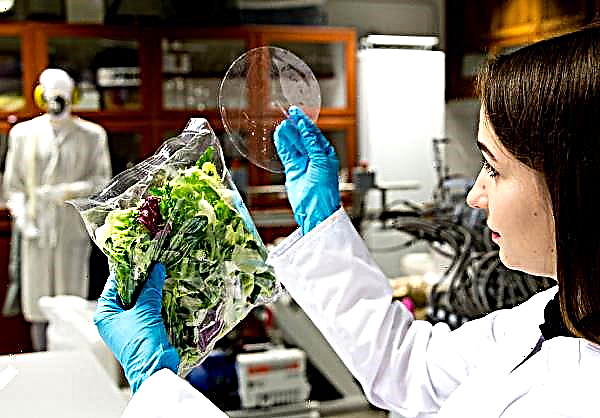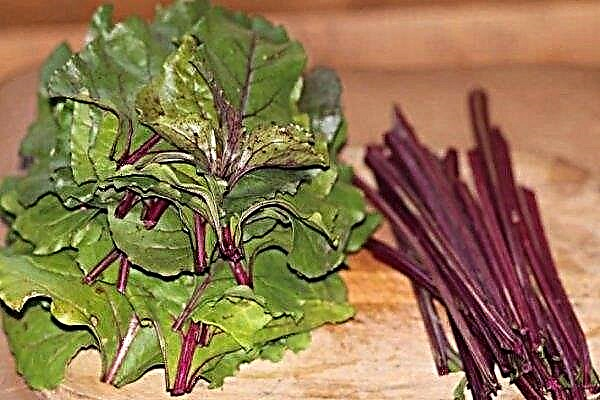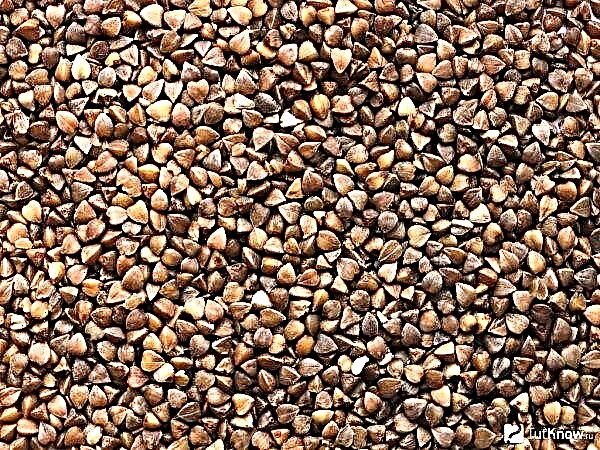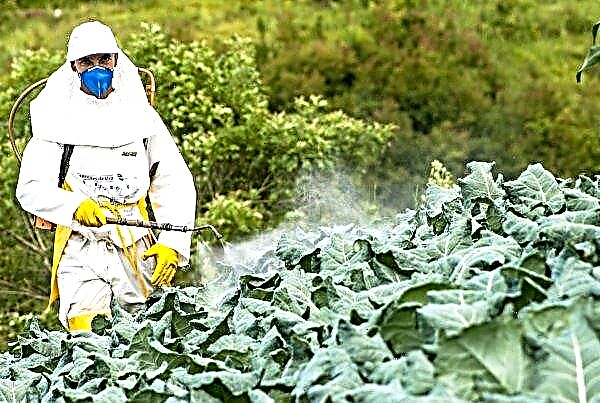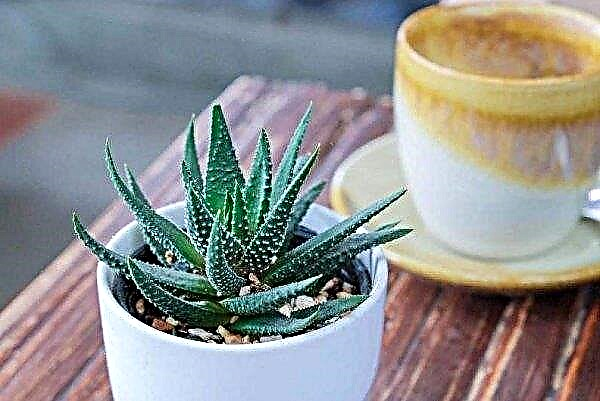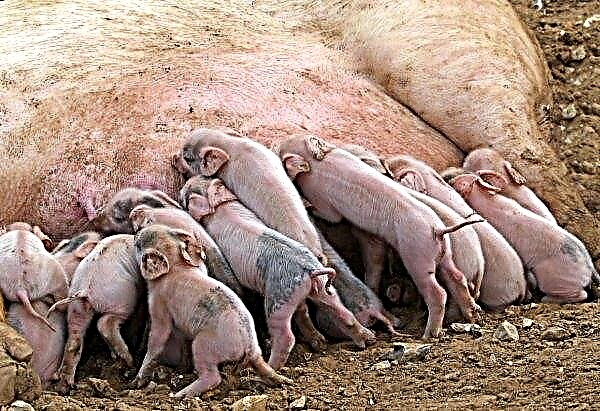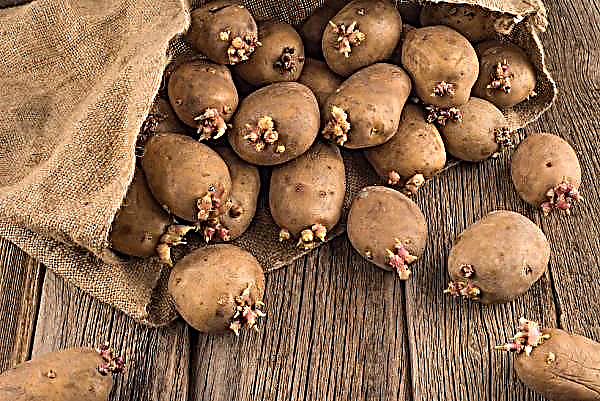Proper arrangement of the greenhouse is a guarantee of good crops. Consider why ventilation is needed in polycarbonate greenhouses, what types are and how to make it with your own hands.
The reasons for the mandatory arrangement of ventilation in greenhouses
Well-made ventilation helps to create an optimal microclimate inside greenhouse buildings.
It performs such functions:
- Removes excess heat. Heated by the rays of the hot sun in the summer or heating appliances in the cold period of small isolated spaces can lead to overheating, fatal for cultivated crops. Well-ventilated ventilation removes such risks and reduces sharp differences between day and night temperatures.
- Eliminates excess moisture. In greenhouses, evaporation does not occur as in open beds, and often there is increased humidity. Access to drier air masses from the street reduces the greenhouse effect.
- Delivers fresh air. The stagnation of air masses against the background of heat and high humidity contributes to the emergence of pathogenic bacteria and some pests of crops (aphids, slugs, wood lice). To all other plants, like any living cells, you need fresh air for normal life.
Did you know? Greenhouses, close to modern buildings, appeared, according to some scientists, in the XIII century in Italy. They were used for growing imported exotic plants and were called botanical gardens. In the Russian Empire, the fashion for such greenhouses with tropical plants appeared only in the second half of the 16th century.
Types of ventilation systems in greenhouses
In general, ventilation systems are divided into several types. Consider their features, advantages and disadvantages.
Manual ventilation
This option is based on natural ventilation through openings (windows, doors, transoms). This is only possible with the permanent residence of the owners of greenhouses next to them, since the windows must be opened in a timely manner. For buildings located in summer cottages, which are visited far from every day, this method of ventilation is unacceptable.
When determining the number of openings, the multiplicity must be observed. The number of openings opposite each other in greenhouse constructions must be paired, since the air flow should equal the outflow. The smaller the openings, the more they are made.
Openings for the removal of warm air are made higher (in the roof), and the influx of fresh and cooler air masses comes from the lower openings (near the ground). Due to this temperature difference, the natural movement of air occurs.
The number of transoms and window leaves can be used to adjust the intensity of ventilation, based on outdoor and greenhouse conditions. To accurately determine the temperature and humidity in the building, a thermometer and a hygroscope are installed there, and the conditions are controlled, leading to optimal ventilation.
- The advantages of the manual system are as follows:
- simplicity of design;
- independence from the availability of electricity;
- saving money.
- The disadvantages are:
- time costs - must be present for control;
- labor costs - you must constantly manually open and close the openings.
Important! A sharp temperature difference is unacceptable. In the event of a drop in temperature of 20-30 ° C in just a few minutes, the plants will receive severe stress and may die.
Forced air exchange
Forced ventilation is carried out using axial fans, powered by electricity. It is most optimal for industrial greenhouses. In spacious buildings, exhaust ventilation is usually installed, in which devices with a low speed are used that move large air masses - this avoids draft and overheating.
This is especially true for large film greenhouses. Powerful axial devices are used as such an accelerating fan preserving a microclimate on large areas. They have a low noise level, can have a thermal relay.
- The advantages of forced air exchange are as follows:
- fast and even supply of fresh air;
- a large selection of different fans, with which you can change the ventilation modes and select the optimal one;
- saving labor and time - no need to manually open and close openings;
- such a system can be fully automated when mounting temperature sensors with relays and to exclude the mandatory presence of a person;
- relatively inexpensive price.
- The disadvantages include:
- the need for a source of electricity;
- you need to spend money on the purchase of equipment;
- difficult installation.
Hydraulic system
A lever system connects the hydraulic system to the transom. One hydraulic drive, which is a system of interconnected vessels, is located on the street, and the other is inside the greenhouse.
If the temperature in the sheltered shelter for plants reaches a certain temperature, then the heated liquid expands through the hoses and pushes the lever that opens the opening. The second drive, located on the street, works when the temperature drops (contracts) and makes a movement to close the window.
- The advantages of a hydraulic ventilation system include:
- independence from the availability of a source of electricity;
- there is no need for a human presence;
- durability and reliability.
Did you know? Devices with hydraulics were used in ancient Greece (to extinguish a fire). Some of the basics of hydrostatics were determined by Archimedes. Leonardo da Vinci was fond of hydraulic experiments. However, complete systems and hydraulic drive appeared only at the end of the XVIII century.
Bimetal construction
Two types of metal are used in these systems, usually steel and brass. When heated, the metal plate bends and opens a window for ventilation. When cooling, the metal is compressed, and the reverse process occurs - the window is closed.
- The advantages of the bimetallic design for ventilation are as follows:
- low cost;
- no need for electricity;
- strength and durability;
- easy installation.

- The disadvantages include the following:
- the system only works on small transoms;
- it is difficult to make a design that responds to the desired temperature;
- not acceptable in winter greenhouses;
- does not work right away.
Important! For small buildings (up to 10 m²), two windows are sufficient. In a cool climate, ventilation openings should make up about 10% of the surface of the greenhouse structure, and in the south of the country their area is larger - 20%.
How to make a DIY greenhouse ventilation system
The forced system can be mounted independently. The most important thing is to choose and install the fans correctly.
Fan selection
An important component of the ventilation system in the greenhouse is the fan. A fan of a certain power is selected depending on the size of the greenhouse.
When purchasing a device for ventilating greenhouse buildings, you need to focus on the following points:
- The air flow rate is required no higher than 1.9 m per 1 second.
- The rate of aeration is in the range from 50 to 60 times in 60 minutes.
- When planning a purchase, the following ratio can be taken into account - for 40 m³ the fan should be 2000 m³ in 60 minutes. Purchase devices with some power margin.
- In small greenhouses it is convenient to use ventilation devices, which are used in toilets. They are made with moisture protection.
- For ease of use, it is necessary that the device for ventilating the premises has a speed controller that would allow you to set the power depending on the temperature and moisture level of the air inside the building.
- For large greenhouse complexes, you need to buy special fans. For air recirculation inside such buildings, there are even spray devices that increase humidity, which is important when the heating system is working.
Video: All the secrets and subtleties of ventilation in the greenhouse
You can determine the fan power by calculation. It should be noted that the intensity of ventilation is directly related to seasonality and weather conditions. In the summer, the air in the greenhouse structure should change in full for 60 seconds. In the cold season, 25-30% of fresh air is enough for ventilation so that the plantings do not freeze.
Usually, the following formula is taken for calculations: A = V × C × K, where:
- A - device capacity (m³ / h);
- V is the volume of the room (m³);
- С - air exchange rate (in 1 h), as a rule, 1 change in 60 sec, 60 in 1 h;
- K is the loss coefficient.
In the presence of a filter K = 1.25, that is, the loss is 25%.
For example, we can consider the calculation of the fan power for a greenhouse with parameters 1.5 × 2.4 × 2.5 = 9 m³. A = 9 × 60 × 1.25 = 675 m³ / h. This value corresponds to the performance of the unit. They recommend taking devices with a power reserve of 20–25% more.
Important! For ventilation during the cold season, you can use a device with a lower power, so it is better to choose a fan with a speed controller.
Installation Rules
To install a simple automatic ventilation system, the following materials and devices are necessary:
- digital thermostat;
- Power Supply;
- fan of the required power;
- bolts and duct tape for fastening.

In order to ventilate the greenhouse design efficiently, you must adhere to the following rules during installation:
- We arrange the fan correctly - at the highest point in the structure where the heated air rises. This is usually a roof space or side wall. In sufficiently large rooms of the greenhouse type, air ventilation devices are mounted on both sides of the end part of the structure. In country greenhouses they are installed on top of the door.
- In large structures, ventilation devices are placed indoors.
- It is preferable to take devices with shutters to protect from the external environment and to close openings when the equipment is not working.
- In the design, when installing the fan, there must be an opening for the normal ventilation of air flows. Usually, a window is made opposite the fan. In summer versions of the greenhouse, a small opening is sufficient, which is hung with a damp piece of fabric.
- When installing automatic on and off devices, thermostats and humidity sensors are connected to the ventilation system. The device must turn on when the air temperature reaches +28 ... + 30 ° С, and turn off at + 22 ° С. These sensors are installed at different ends of the building.
Did you know? The first working centrifugal fan was invented by a Russian military engineer, general of the corps of mining engineers A. A. Sablukov in the 30s of the XIX century. It was first successfully used in mines and submarines.
Possible mistakes in the manufacture of greenhouses
Beginners should consider the following possible errors when installing a do-it-yourself ventilation system in a greenhouse:
- Drafts. It is necessary to ensure the ventilation of the greenhouse so as to exclude drafts. Many plant crops (peppers, cucumbers) do not tolerate them. For this reason, ventilating the greenhouse by opening doors from different ends is not a good idea.
- Low window layout. Air rises when heated, so if the windows for ventilation are low, the effectiveness of such ventilation is sharply reduced.
- Do not hang mercury thermometers in the greenhouse. Due to accidental damage, mercury can enter the soil. In this case, you have to do a complete replacement of the soil.
- Creating temperature differences. When detecting air overheating in a greenhouse, you should not immediately open all windows and doors, especially if it is by no means hot outside. The temperature may drop within a few minutes. Such sharp fluctuations will negatively affect plants. The temperature drop should be gradual. Typically, windows for ventilation are opened when the air temperature reaches a mark above + 27 ° C.

For the ventilation of a polycarbonate greenhouse, electric fans, a hydraulic or bimetal system can be used. The most convenient and all-weather is considered forced ventilation, which you can mount yourself, but for this it is important to choose the right fan.



